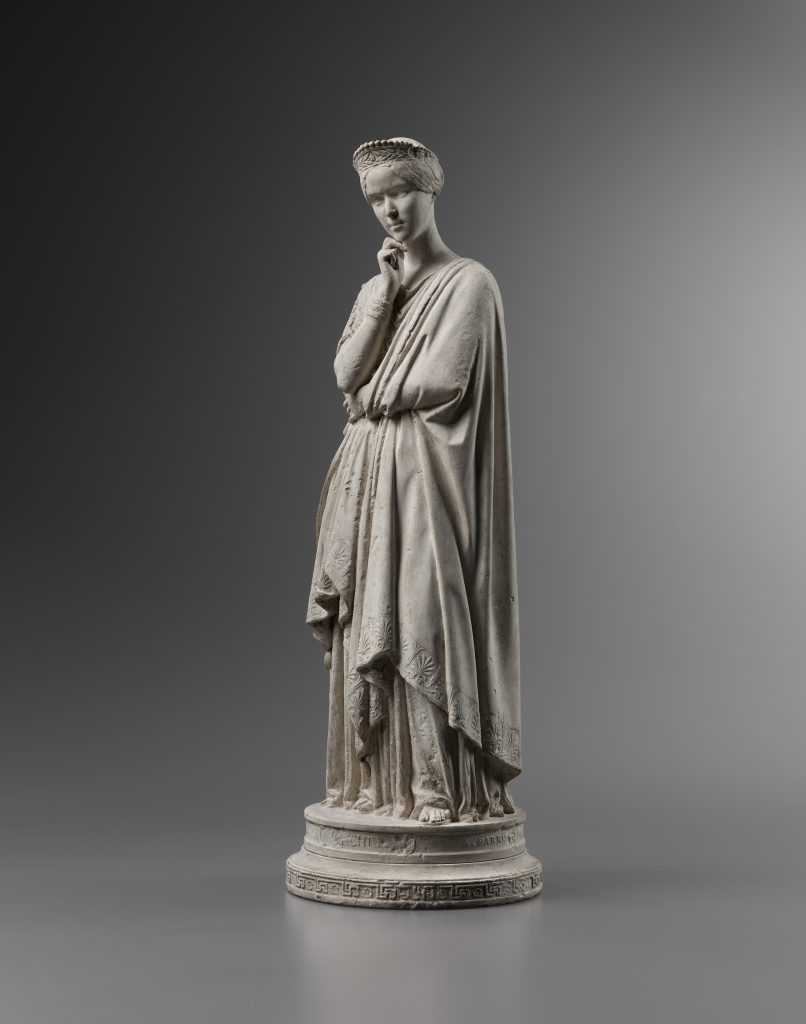Medallist and sculptor, Jean-Auguste Barre was widely recognised for his small statuette-portraits, a fashion that started in the 1830’s. An object of great desire amongst the 19th century public, due to its small size, its efficient and affordable distribution in series, and easy placement in bourgeois apartments. In his signature style of powerful romanticism, Barre created elegant memorabilia of royalty, officials and celebrated dancers and actresses. Initiated by Mme de Pompadour and her friends in the mid-18th century, the tradition of having a statue of one’s favourite actress made its way through the 19th century, triggering actresses to have their busts reproduced so as to distribute them amongst their admirers.
On 12 August 1847 the beloved tragediènne, Mademoiselle Rachel (Elizabeth-Rachel Félix, 1821-1858) ordered the first exemplar of the present Barre’s Rachel, dressed as her most admired character Phèdre (see Jean-René Gaborit, op.cit., p. 33). Whilst the Romantic Drama movement was becoming during the 19th century increasingly popular, the tragedy Phèdre – derived from Greek mythology – had enjoyed a revival thanks to Rachel’s talent for classical drama.
Executed in ivory, bronze, silvered bronze, plaster and bisque porcelain with infinite variations, Barre created a statuette romantique that was frequently reproduced and affordable for the wide public. All the listed effigies are dated 1847 except for two ivories: the one of the Louvre, dated 1848, is most likely the copy shown at the Salon of 1849; the other, dated 1851, was sold with the collection of the writer Jules Janin in 1877 (see Anne Pingeot, op. cit., p. 255). The precision of the classical costume and hear dress, the Greek ornaments and frieze referring to the Greek mythology, and the truthful representation of the sitter’s face and posture were essential to the statuette’s success. In meditative stance, her gaze casted afar, Rachel embodied the actress perfectly, who was known for her clear diction and minimized gestures. Serene and taciturn, Rachel is exemplary for 19th century French romantic sculpture, but most importantly, an ode to the acclaimed actress who evoked a high demand for classical tragedy across Europe.
The statuette became internationally-known for it was not only exhibited at the Salon of 1849, but also shown at the 1889 Exposition Universelle and even mentioned by the dandy author Jules Lecomte (1810-1864) in his description of the actress’ changing room.






